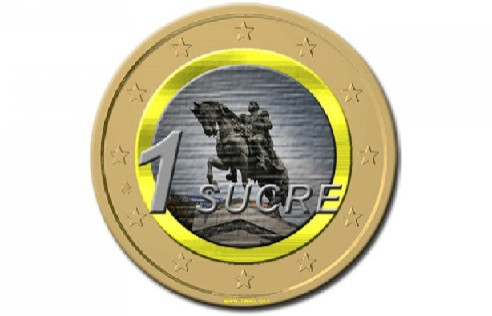A Latin American Euro? The Region’s First Steps Towards A Unique Currency -- What Is The Sucre?

Latin America is the trade destination du jour. With above-average growth rates and a slew of countries to choose from, foreign investors are flocking to the region and the world’s biggest economies want a piece of it. All this sudden interest, while mostly welcomed, has made some Latin American governments look for more integration and increased trade within the area.
The Bolivarian Alliance for America (or ALBA for its name in Spanish, Alianza Bolivariana para América) was established with the goal of promoting cooperation and market unity. It was established in 2004 in Havana, started by then-Venezuelan president Hugo Chávez and Cuba’s leader Fidel Castro. The alliance was later joined by Bolivia (2006), Nicaragua (2007), Honduras (2008) and Ecuador (2009). In 2008 the Caribbean nations that are members of CARICOM (Caribbean Community) became members as a group. Invitations to join have been issued to Jamaica, Mexico and Argentina.
As the ALBA countries agreed on free-trade and join effort toward growth based on leftist policies, the organization made drastic steps for deeper integration with the proposal of a unique currency for the region: the “sucre.”
The idea was first brought up by then-Brazilian President Luis Inácio Lula da Silva -- a non-ALBA member -- who in December 2008 said in an interview that the recently created South American Bank was working toward a Latin American Central Bank with its own currency. The project was then picked up by Chávez, and in April 2009, just as Ecuador was joining the ranks, the country members signed the agreement and the sucre was born.
The reason behind the name of the new currency is twofold: On the one hand, it honors Antonio José de Sucre, one of the freedom fighters for South America and the right-hand man of Venezuelan independence hero Simón Bolívar (the sucre agreement was signed in his hometown of Cumaná, Venezuela). On the other, it is an acronym of Sistema Unitario de Compensación Regional de Pagos (United System of Regional Payment Compensation).
The currency was immediately adopted as trading currency, in an effort to drop the dollar (the value of the sucre stands at $1.25). In 2010, Bolivia made its first export in sucres, sending 5,000 tons of soy oil to Venezuela for 4.46 million sucres. Last May, Nicaragua and Venezuela signed their first transaction in sucres, with Nicaragua selling black beans to Venezuela for 25 billion sucres.
However, besides these specific market transactions, the sucre has not been put much to use. “It is still in its initial stages,” said Omar Rachid, the author of “From The Euro To The Sucre: The Economics Of South American Integration.”
Rachid pointed out that while the currency aspires to be a substitute of the dollar in Latin American trade, its very foundation is based on the dollar, which will make it hard for the currency to become independent. “The South American Bank was built over funds of $20 billion, and the sucre stands on that base,” he added.
Argentine attorney René Alberto Langlois stated that for the sucre to one day become the common real currency in the region, the country members have to first harmonize their economic policies. “The creation of a central common bank, that will issue the currency, would be the last stage of the process,” he said.
Rachid mentioned that a few countries in the region, like Panama and El Salvador, use the American dollar as their currency, which makes total integration and the displacement of the dollar virtually impossible at this stage.
Another obstacle to the sucre is international acceptance of the currency, which is fundamental for it to succeed in the global markets. “The fact that Venezuela is its biggest promoter is not helping with the international perception of the currency,” said Rachid. “It tests credibility.”
All things considered, will the sucre ever become Latin America’s only currency? “Maybe,” said Rachid. “But it will take years. Even the euro took half a century to become Europe’s unique currency.”
Follow me on Twitter: @PReyMallen
© Copyright IBTimes 2025. All rights reserved.




















